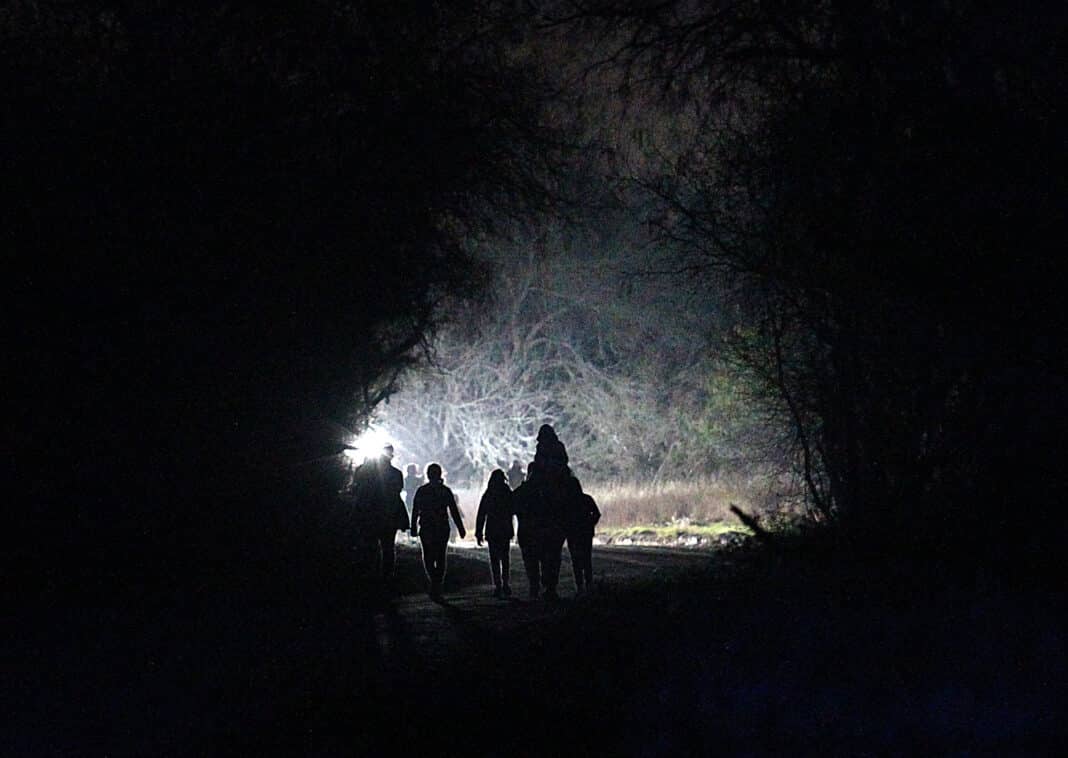Despite support from local Border Patrol agents for the current surveillance blimps in use in the Rio Grande Valley, U.S. Customs and Border Protection is ending the program that began approximately seven years ago, according to U.S. Rep. Henry Cuellar.
Cuellar, D-Laredo, said Tuesday morning that Border Patrol will end its use of the Tactical Aerostats and Re-Locatable Towers program, or TAS, because it is too expensive.
“It’s a self-inflicted wound because you all went ahead and got into contracts with vendors and you are paying too much, and I’ve been telling you for years to slow down and lower the price,” Cuellar said, referring to Border Patrol leadership in Washington, D.C.
These aerostats, which can reach altitudes ranging between 500 and 5,000 feet, are equipped with radars and high-resolution and infrared cameras. They are also relocatable.
Cuellar said he has had a problem with the high-dollar cost paid to the private contractor for years.
“The balloon is already paid for and all you are doing is paying millions of bucks to bring it up and down,” Cuellar said of the TAS contract.
In 2019, Peraton, a private contractor that operates the TAS aerostats in the Rio Grande Valley, announced that CBP had awarded it a contract valued up to $185.5 million for one year with an option for four additional years, according to a company news release.
CBP has budgeted $29 million a year since 2013, which, over the lifespan of TAS, comes out to approximately $203 million.
Indications that Border Patrol would end the program surfaced in the fiscal year 2021 budget proposal to Congress that was made public in Jan. 2020.
“The TAS program, originally established to provide land domain awareness and persistent ground surveillance along the southern border, is comprised of six aerostats and three relocatable towers deployed in the Rio Grande Valley and Laredo Sectors,” the budget proposal states.
The request says CBP planned not to renew the $29 million in funding because remote video surveillance system, or RVSS, tower deployments will enable CBP to remove the relocatable towers and decommission them.
CBP also said the funding for the remaining six aerostats will not be needed in the 2021 fiscal year.
However, the congressman, who spoke with local Border Patrol leaders, said local authorities like the TAS program.
Cuellar said he’s exploring ways to eliminate the use of private contractors to slash the program’s cost and have Border Patrol agents operate TAS. So it’s possible the aerostats are not going away for good.
“So what are they going to do with these aerostats now? So there’s a lot of questions once they get fully staffed at Homeland. I want to go into this,” Cuellar said.
TAS, however, is not the only aerostat program in the Rio Grande Valley.
There’s also the Tethered Aerostat Radar System, or TARS.
TARS works by capturing continuous radar information from lawful and unlawful aircraft, vessels and vehicles that are either entering or approaching the United States, according to the U.S. Government Accountability Office.
“TARS provides radar coverage from an altitude of operation up to 15,000 feet and can detect objects within 200 nautical miles,” The GAO said in a 2017 report. “The elevated radar sensor on the TARS aerostat mitigates curvature of the earth and terrain masking limitations of common ground based radar systems.”
TARS is deployed to eight locations throughout the United States and Puerto Rico, with one in Rio Grande City.
This program is not immediately being discontinued.
However, a Government Accountability Report published in 2017 indicates that TARS may eventually be on its way out.
“According to CBP, TARS are obsolete and no longer manufactured or supported and could be out of service by early 2020. CBP officials told us TARS sites face immediate risks of being out of service earlier than 2020 should a crash occur at a TARS site rendering the radar components inoperable because there are no spare radar systems available. CBP has no specific plans for replacement or modernization of TARS, but is currently undergoing an analysis of alternatives to determine whether the agency should modernize or replace them,” the GAO said in a 2017 report.
While Border Patrol controls the information TARS gathers, the launching, landing and maintenance of these aerostats is conducted by the private contractor Peraton, which, on Feb. 4, 2020, announced that CBP had awarded it a TARS contract for one base year with four option years valued at up to $277.5 million.
And as older technology becomes outdated, new surveillance technology continues to be created that will likely end up being used by Border Patrol in the Rio Grande Valley, which remains one of the busiest areas in the United States for illegal crossings and drug smuggling.
In 2019, the Florida-based company Drone Aviation Holding Corp. announced that Border Patrol selected it as the prime contractor for Winch Aerostat Small Platform, or WASP, aerostats, which are mobile and take two people to operate.
The company’s 2018 annual report to the Securities and Exchange Commission says it entered into an exclusive teaming agreement with CBP to retrofit and propose the production of new surveillance systems, as well as providing the WASP aerostat, engineering support for WASP system integration and field service representatives for maintenance, training, deployment, retrieval and removal, and warranties for WASP.
“In December 2018, the prime contractor awarded us a subcontract valued at $3.8 million for six WASP aerostat systems, which we have previously announced. These WASP powered surveillance systems are expected to be deployed at a CBP Border Patrol Sector on the southern border of the United States,” the company said in the SEC statement.
CBP has made no public announcements regarding the use or deployment of the WASP aerostat on the southern border or in the Rio Grande Valley Sector.
Border Patrol did not respond to repeated requests for comment regarding the discontinuation of the TAS aerostats.




